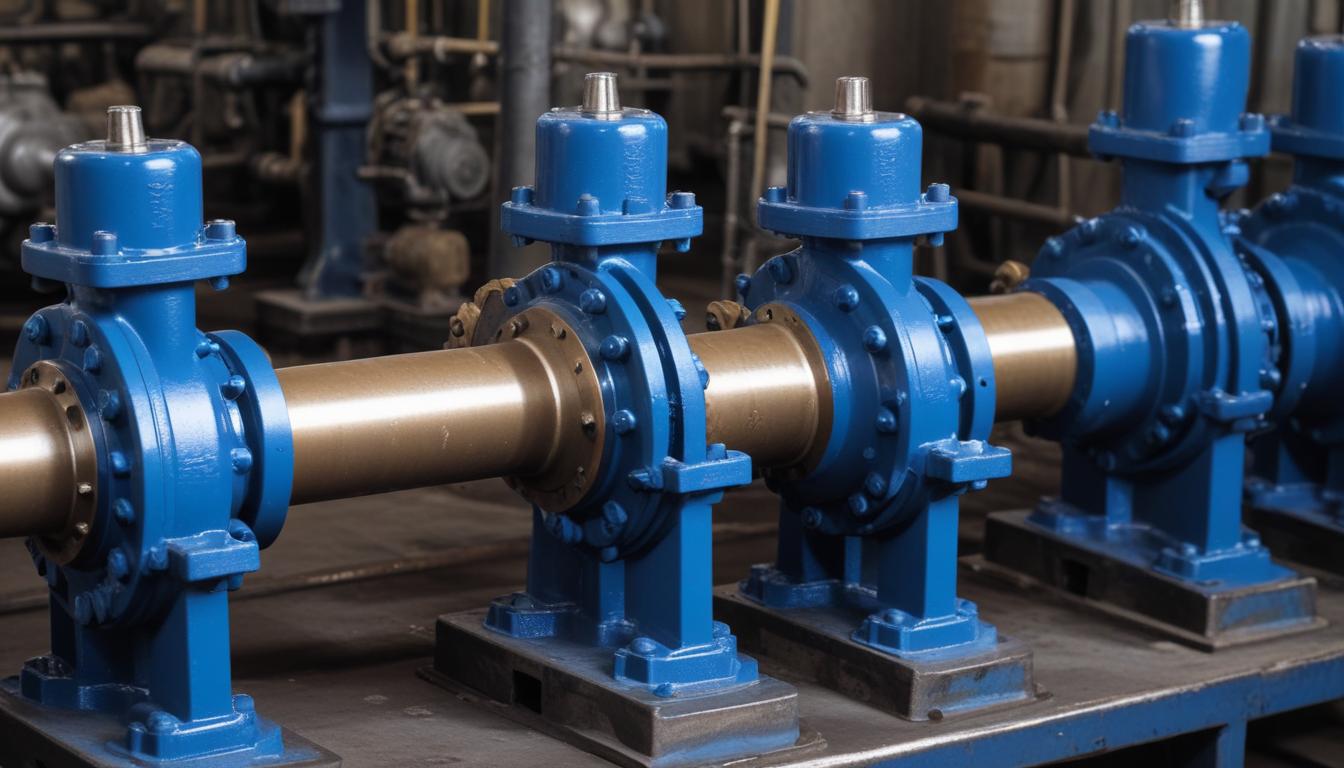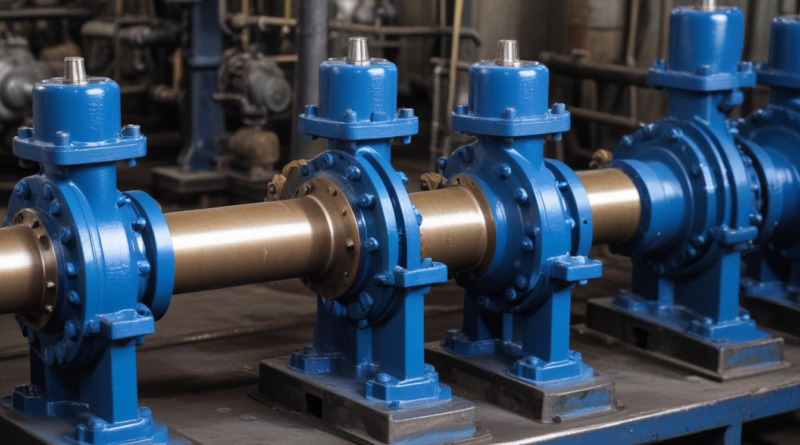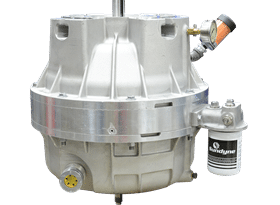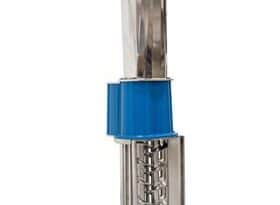lubrication best practices for pumps
Selecting the appropriate lubricant is crucial for effective pump lubrication and overall equipment longevity. The right choice not only ensures efficient operation but also minimizes the risk of wear and tear, thereby supporting ongoing maintenance efforts. When evaluating lubricants, consider the following factors:
- Type of Lubricant:
- Mineral Oils: Commonly used due to their wide availability and cost-effectiveness. Suitable for general-purpose applications.
- Synthetic Oils: Offer superior performance in extreme temperatures and provide better oxidation resistance, making them ideal for demanding environments.
- Greases: Ideal for applications requiring higher viscosity and longer-lasting lubrication without frequent reapplication.
- Viscosity: The lubricant’s viscosity must match the pump’s operational requirements to ensure proper film formation and reduce friction.
- Compatibility: Ensure the lubricant is compatible with pump materials and any seals or gaskets to prevent chemical reactions that could lead to degradation.
- Operating Conditions: Factors such as temperature, pressure, and exposure to contaminants should influence the lubricant selection to maintain optimal performance.
Implementing best practices involves a thorough assessment of these factors to select a lubricant that aligns with the specific needs of the pump system. The following table outlines common lubricant types and their key characteristics:
| Lubricant Type | Advantages | Typical Applications |
|---|---|---|
| Mineral Oil | Cost-effective, widely available, suitable for general use | Standard industrial pumps, HVAC systems |
| Synthetic Oil | High thermal stability, better performance in extreme conditions | High-performance pumps, high-temperature environments |
| Grease | Long-lasting, suitable for high-viscosity needs | Sealed bearings, applications with limited access for re-lubrication |
| Water-Glycol Based | Good cooling properties, suitable for water-lubricated systems | Water pumps, cooling systems |
Selecting the right lubricant involves balancing these attributes to achieve efficient pump lubrication and support ongoing maintenance, ensuring the pump operates reliably and effectively over its service life.
lubrication schedules and intervals
Establishing a well-defined lubrication schedule is essential for maintaining optimal pump performance and extending equipment lifespan. Adhering to a consistent routine ensures that all moving parts receive the necessary lubrication, minimizing friction and wear. Several key factors influence the determination of appropriate intervals:
- Manufacturer Recommendations: Always consult the pump manufacturer’s guidelines, as they provide specific intervals and types of lubricants tailored to each pump model.
- Operating Conditions: Pumps operating in extreme temperatures, high pressures, or corrosive environments may require more frequent lubrication to counteract the harsher conditions.
- Lubricant Type: The longevity and effectiveness of different lubricants vary. Synthetic oils, for example, may last longer under certain conditions compared to mineral oils.
- Usage Patterns: Continuous operation can lead to faster lubricant degradation, necessitating more regular maintenance compared to intermittent use.
- Temperature and Vibration Levels: Higher operational temperatures and excessive vibrations can accelerate lubricant breakdown, requiring more frequent application to maintain protection.
Implementing a structured lubrication schedule not only supports the longevity of the pump but also aligns with best practices in maintenance management. Utilizing a maintenance management system can help track lubrication activities, ensuring timely applications and reducing the risk of oversight.
The following table outlines general guidelines for lubrication intervals based on pump type and operating conditions:
| Pump Type | Lubrication Interval | Operating Conditions |
|---|---|---|
| Centrifugal Pumps | Weekly | Standard industrial environments |
| Piston Pumps | Daily | High-pressure applications |
| Gear Pumps | Bi-weekly | Moderate load conditions |
| Submersible Pumps | Monthly | Underwater or confined spaces |
Regularly reviewing and adjusting the lubrication schedule based on real-time monitoring data and operational feedback ensures that pump lubrication remains effective. This proactive approach not only enhances pump reliability but also integrates seamlessly with comprehensive maintenance strategies, thereby preventing unexpected failures and optimizing overall system performance.
application techniques
Effective application of lubricant is essential to ensure that all critical components receive the necessary protection and to maintain optimal pump lubrication. The choice of application technique depends on the pump type, operational environment, and specific maintenance requirements. Below are the primary methods used in pump lubrication:
- Manual Application: This traditional method involves using tools such as grease guns or oil cans to apply lubricant directly to pump components. It provides precise control over the amount and location of lubricant but requires regular maintenance checks and can be labor-intensive.
- Centralized Lubrication Systems: These systems use a central reservoir to distribute lubricant automatically to multiple lubrication points within the pump. This method enhances consistency, reduces labor, and is ideal for complex pump systems with numerous lubrication sites.
- Automatic Lubricators: Equipped with sensors, these devices monitor lubricant levels and dispense lubricant as needed. They are particularly useful in continuous operation environments where manual application is impractical, ensuring uninterrupted pump lubrication.
- Pressure-Fed Systems: Utilizing pumps to deliver lubricant under pressure, this technique ensures deep penetration into tight spaces and is effective for high-viscosity lubricants or hard-to-reach areas.
Adhering to best practices during the application process is crucial to prevent contamination and ensure the longevity of the pump. Key considerations include:
- Cleanliness: Always use clean tools and containers to avoid introducing contaminants into the pump system.
- Correct Quantity: Apply the appropriate amount of lubricant to prevent over-lubrication, which can attract dirt, or under-lubrication, which can lead to increased wear.
- Temperature Control: Ensure that lubricant is applied at the appropriate temperature to maintain its viscosity and effectiveness.
- Compatibility: Verify that the application equipment is compatible with the chosen lubricant to prevent degradation or adverse reactions.
The following table summarizes the various application techniques along with their advantages and suitable applications:
| Application Technique | Advantages | Suitable For |
|---|---|---|
| Manual Application | Precise control, low initial cost | Simple pump systems, periodic maintenance |
| Centralized Lubrication | Consistent lubrication, reduced labor | Complex pump systems, multiple lubrication points |
| Automatic Lubricators | Continuous protection, minimal maintenance | High-demand environments, continuous operation |
| Pressure-Fed Systems | Effective penetration, handles high-viscosity lubricants | High-pressure pumps, hard-to-reach areas |
Implementing the appropriate application technique, tailored to the specific needs of the pump system, ensures effective maintenance. This proactive approach not only sustains pump performance but also aligns with best practices in maintenance management, thereby enhancing the overall reliability and efficiency of the pumping equipment.
monitoring and maintenance
 Implementing effective monitoring and maintenance procedures is essential to ensure that pump lubrication remains optimal, thereby enhancing the overall performance and lifespan of the pump system. Regular monitoring allows for the early detection of potential issues, enabling proactive maintenance actions that align with best practices in pump management.
Implementing effective monitoring and maintenance procedures is essential to ensure that pump lubrication remains optimal, thereby enhancing the overall performance and lifespan of the pump system. Regular monitoring allows for the early detection of potential issues, enabling proactive maintenance actions that align with best practices in pump management.
Key components of a robust monitoring and maintenance program include:
- Oil Analysis: Regular testing of lubricant samples to assess properties such as viscosity, contamination levels, and the presence of wear metals. This helps in identifying degradation or contamination, allowing for timely lubricant replacement or filtration.
- Visual Inspections: Periodic examination of pump components for signs of leaks, corrosion, or unusual wear. Visual checks can quickly identify issues that may compromise pump lubrication effectiveness.
- Condition Monitoring Technologies: Utilizing tools such as vibration analysis, thermal imaging, and ultrasonic sensors to continuously monitor the pump’s operational state. These technologies provide real-time data that can predict failures and guide maintenance decisions.
- Tracking Lubrication Records: Maintaining detailed logs of all lubrication activities, including the type and quantity of lubricant used, application dates, and any observations during maintenance. Accurate records facilitate trend analysis and improve maintenance planning.
- Scheduled Maintenance Checks: Establishing routine maintenance tasks based on manufacturer recommendations and operational data. Scheduled checks ensure that all aspects of pump lubrication and overall maintenance are systematically addressed.
The following table outlines common monitoring techniques and their respective benefits:
| Monitoring Technique | Purpose | Benefits |
|---|---|---|
| Oil Analysis | Assess lubricant condition and detect contamination | Early identification of lubricant degradation and pump wear |
| Vibration Analysis | Monitor mechanical vibrations to identify imbalances or misalignments | Predict mechanical failures before they occur |
| Thermal Imaging | Detect abnormal temperature patterns in pump components | Identify overheating issues that may affect pump lubrication |
| Ultrasonic Sensors | Detect high-frequency sounds related to leaks or mechanical wear | Non-invasive detection of potential problems |
| Visual Inspection | Identify visible signs of wear, leaks, or corrosion | Quick and straightforward method for early issue detection |
Effective maintenance strategies also incorporate the following best practices:
- Develop a Comprehensive Maintenance Plan: Tailor the maintenance schedule to the specific needs of the pump system, considering factors such as usage frequency, environmental conditions, and manufacturer recommendations.
- Train Personnel: Ensure that maintenance staff are properly trained in pump lubrication techniques, monitoring procedures, and the use of diagnostic tools to maintain high standards of pump lubrication.
- Implement Predictive Maintenance: Utilize data from monitoring technologies to predict when maintenance should be performed, reducing downtime and preventing unexpected failures.
- Regularly Review and Update Procedures: Continually assess and refine maintenance protocols based on operational data, technological advancements, and feedback from maintenance personnel to ensure ongoing effectiveness.
- Use High-Quality Lubricants: Select appropriate lubricants that meet the specific requirements of the pump system to enhance reliability and reduce maintenance needs.
Adhering to these monitoring and maintenance practices ensures that pump lubrication remains effective, supports the longevity of the pump, and aligns with industry best practices. By integrating these strategies into the overall maintenance program, organizations can achieve greater reliability, reduce operational costs, and maintain optimal pump performance.
troubleshooting common issues
Addressing issues promptly is essential to maintain optimal pump lubrication and ensure the longevity and reliability of pump systems. Common problems can arise from various factors, including improper lubrication practices, environmental conditions, and equipment wear. Below are some typical challenges and strategies to effectively troubleshoot them:
| Issue | Symptoms | Possible Causes | Solutions |
|---|---|---|---|
| Over-Lubrication | Excess lubricant leakage, increased operating temperature | Applying too much lubricant, faulty seals |
|
| Under-Lubrication | Unusual noises, increased friction, overheating | Insufficient lubricant application, high load conditions |
|
| Contamination | Discolored lubricant, presence of particles, reduced lubrication effectiveness | Ingress of dirt, water, or other contaminants |
|
| Lubricant Degradation | Increased viscosity, presence of sludge, reduced lubrication properties | Prolonged exposure to high temperatures, oxidation |
|
| Seal Failure | Leakage around seals, loss of lubricant, contamination ingress | Worn or damaged seals, incompatible lubricant |
|
| High Friction Noises | Grinding or squealing sounds during operation | Insufficient lubrication, bearing wear |
|
Implementing a systematic approach to troubleshooting enhances maintenance efficiency and aligns with best practices. The following steps provide a structured method to diagnose and resolve lubrication-related issues:
- Identify the Problem: Begin by observing the pump system for any abnormal signs such as unusual noises, leaks, or changes in performance.
- Collect Data: Utilize monitoring tools like vibration analyzers, thermal cameras, and oil analysis reports to gather relevant information about the pump’s condition.
- Analyze the Data: Compare the collected data against baseline performance metrics and manufacturer specifications to pinpoint discrepancies.
- Determine Root Cause: Investigate potential causes such as improper lubrication levels, contaminated lubricant, or mechanical wear to identify the underlying issue.
- Implement Solutions: Apply the appropriate corrective measures, which may include adjusting lubrication practices, replacing faulty components, or upgrading lubricant types.
- Verify Effectiveness: After implementing solutions, monitor the pump system to ensure that the issue has been resolved and that pump lubrication is functioning correctly.
- Document Findings: Maintain detailed records of the problem, analysis, solutions, and outcomes to inform future troubleshooting efforts and enhance maintenance protocols.
Additional troubleshooting tips include:
- Regular Training: Ensure maintenance personnel are well-trained in identifying and addressing lubrication issues.
- Use Diagnostic Tools: Invest in advanced diagnostic equipment to facilitate accurate and timely issue detection.
- Maintain Cleanliness: Keep the pump environment clean to minimize the risk of contamination and related lubrication problems.
- Follow Manufacturer Guidelines: Adhere strictly to the manufacturer’s recommendations for lubricant types, application methods, and maintenance schedules.
By proactively addressing common lubrication issues through effective troubleshooting, organizations can uphold best practices in pump maintenance, thereby ensuring consistent performance, reducing downtime, and extending the operational lifespan of their pump systems.




